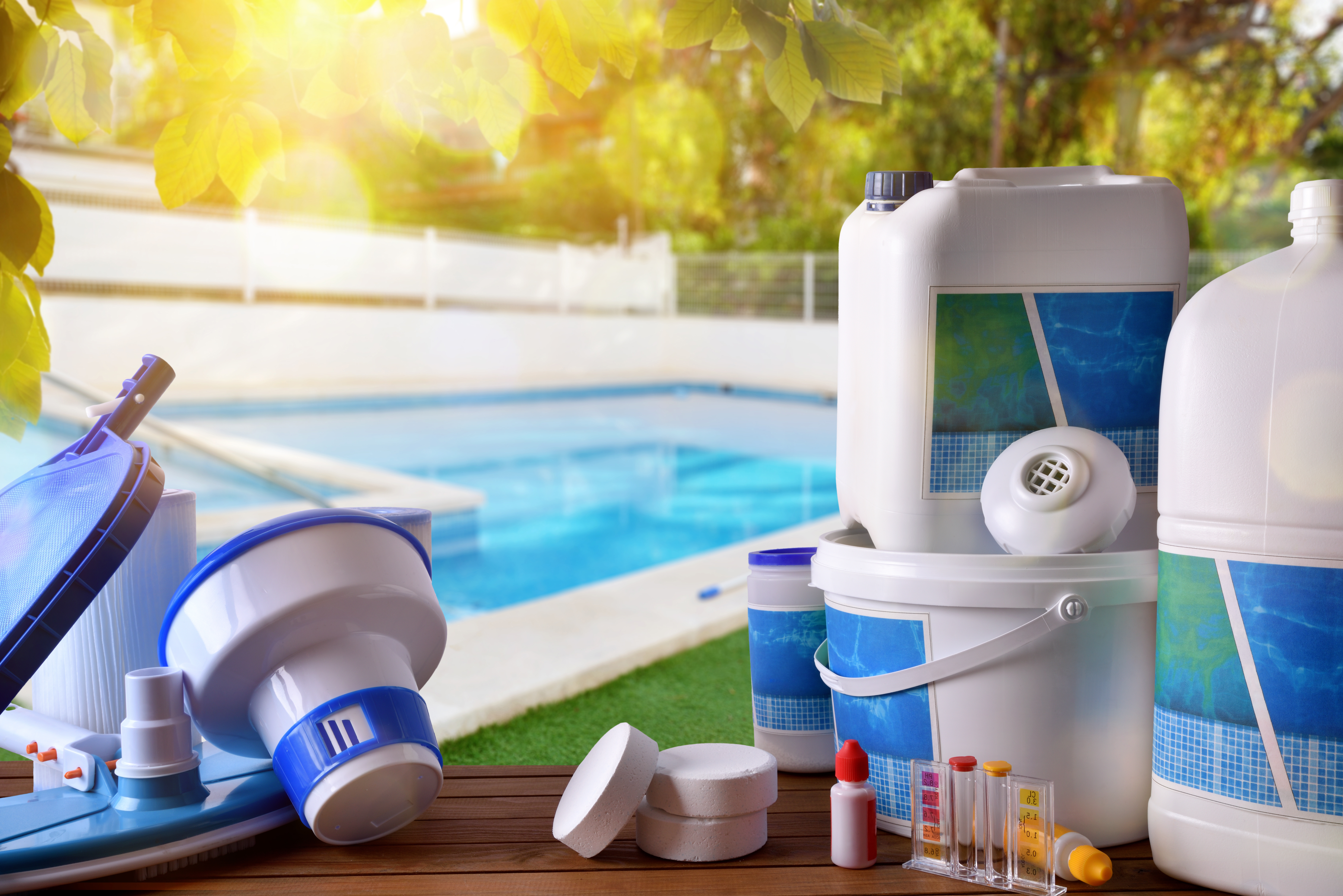
Pool opening season is here! While there are many factors to consider when opening your swimming pool, one of the most important are the chemicals you use to kickstart the season. Rx Clear® Pool Opening Kits contain all the pool chemicals you need whether you have an inground or above ground pool. They are available in regular and deluxe chemical kit options. Here we will explore all of the chemicals from our deluxe kit and how they are essential for opening your pool this spring.
Shock treatment is a crucial part of pool maintenance because it provides a powerful oxidizing boost to the water that regular chlorine levels cannot achieve. Shocking pools on a regular basis, usually weekly or bi-weekly, prevents the buildup of combined chlorine compounds, revives the sanitizing strength of your chlorine, and stops algae growth before it can take over.
It's important to shock pools when reopening them after the winter, in order to oxidize any built-up contaminants and reset sanitizer levels. Overall, routine shock treatments are necessary for maintaining a clear, clean, sanitized, and algae-free pool.
When opening a pool after it has been closed for the winter, there is a chance that some dissolved metals like iron, copper, or manganese may have built up in the water over the offseason. These metals can cause staining on pool surfaces such as vinyl liners and result in the water looking cloudy or discolored. To remove these metal contaminants, you'll want to use a liquid metal remover.
Algaecide is a vital chemical treatment when opening a pool after its been closed for the winter. Over the offseason, algae spores can start to develop and take hold in a pool, especially if there are areas of poor circulation. If not treated proactively with an algaecide, just a few living algae cells can quickly bloom into a full algae outbreak. Using a quality algaecide gives you a head start this season.
After a pool sits closed for the winter months, the pH levels can easily become unstable due to debris buildup and lack of chemical treatment. This is why it's critical to have both a pH increaser and a pH decreaser on hand when reopening the pool for the season. The pH Increaser, such as sodium carbonate, allows you to raise low pH levels caused by acidic buildup back into the ideal 7.2-7.8 range. Low pH can corrode equipment and make chlorine less effective.
Additionally, the pH decreaser, often sodium bisulfate, lets you lower high pH levels caused by alkaline accumulation. High pH can lead to scaling, cloudy water, and chlorine inefficiency. Having these pH adjustment chemicals ensures you can properly balance the water chemistry right from the start before adding sanitizers and algaecides.
A clarifier can be extremely helpful when reopening a pool after the offseason. Over the winter months, dirt, debris, and other particles can accumulate in the water, leading to cloudy or hazy conditions when you first refill the pool.
Using a clarifier when opening your swimming pool helps quickly clear up this cloudy water. Clarifiers work by causing tiny suspended particles to coagulate into larger particles that can then be effectively filtered out. This allows the pool's filtration system to easily remove that built-up grime and particulate matter, restoring optimal water clarity and sparkle. For a refreshing, inviting pool at opening, a clarifier is an easy way to rapidly regain that desirable clean, clear water condition.
In addition to balancing the pH level, achieving the proper total alkalinity is critical when reopening a pool after winter. Total alkalinity, which measures the amount of carbonates, bicarbonates and hydroxides in the water, helps stabilize pH levels. If the alkalinity is too low when starting up the pool, the pH will be prone to bouncing up and down continuously
This is why it's important to use an alkalinity increaser, typically sodium bicarbonate. Adding an alkalinity increaser raises the alkalinity to adequate levels, acting as a pH buffer that prevents the pH from fluctuating wildly. Balanced total alkalinity makes it easier to keep pH locked into the proper range of 7.2 - 7.8 throughout the entire swimming season. Alkalinity adjustment is a key part of getting the pool's chemistry correctly established at opening.
Chlorine stabilizer & conditioner are crucial chemicals, typically made from cyanuric acid. These will help protect and extend the life of the chlorine that will be used to sanitize pool water over the swim season. Ultraviolet rays from sunlight can rapidly degrade and deplete chlorine levels in outdoor pools if not properly stabilized.
Adding the recommended amount of conditioner based on pool volume helps make chlorine last longer by preventing UV degradation. It essentially "conditions" the chlorine to withstand sunlight. Using a stabilizer at opening ensures chlorine will remain effective instead of getting burned off too quickly by the sun's UV over the course of the season.
Say goodbye to algae, bacteria, and pH issues with Rx Clear®'s powerful chlorine, algaecide, clarifiers, and more! With fast-acting chemicals and crystal-clear results, Rx Clear® is your perfect prescription for a crystal clear pool. Want to learn more about our pool opening kits? Check out our list of frequently asked questions about pool chemical kits for all the info you need to get started this season.